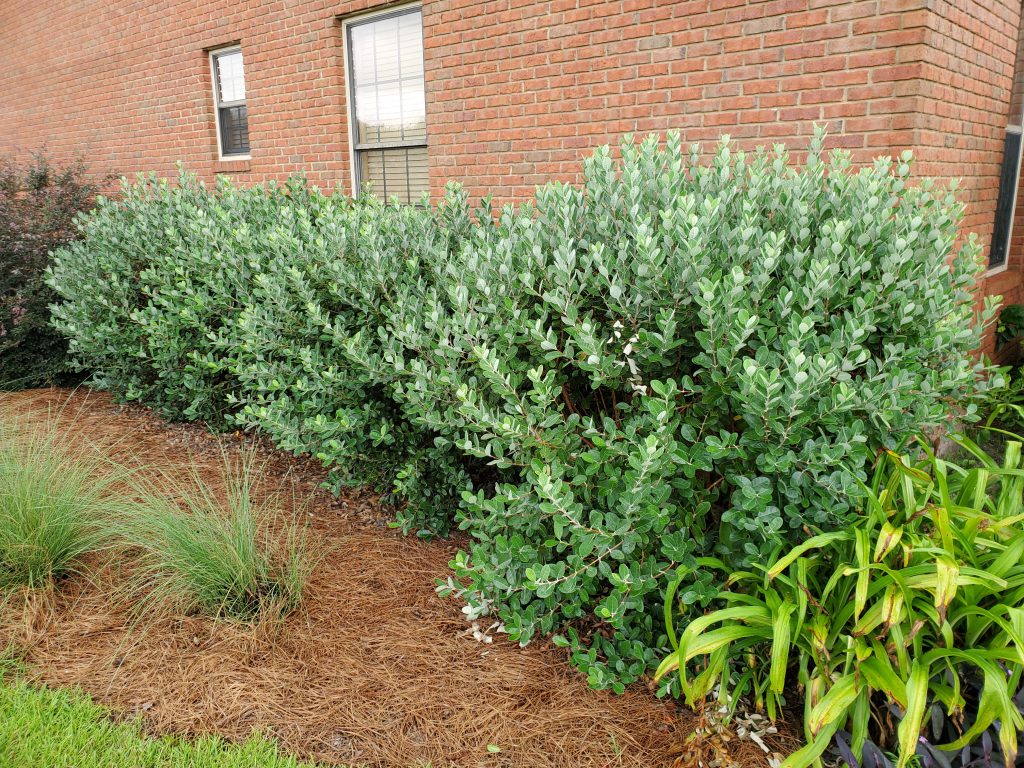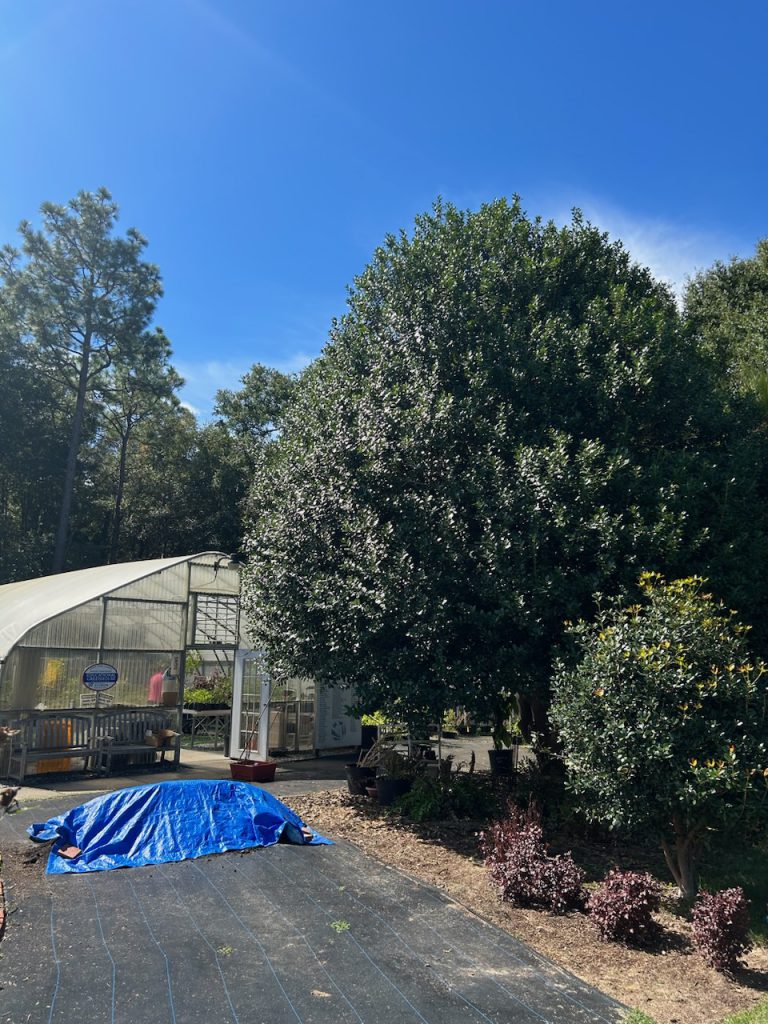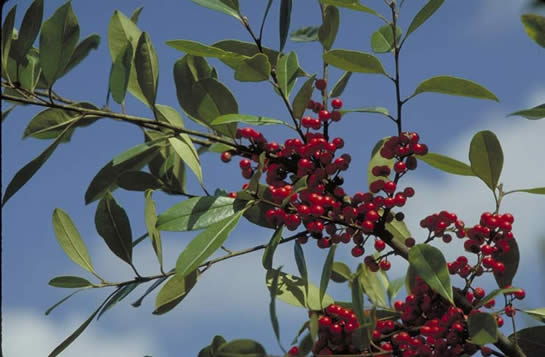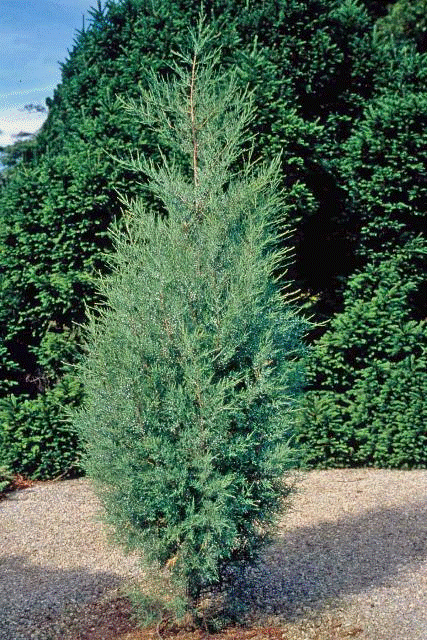Sometimes we just need a little privacy. This is especially true if you live on a busy road or just have annoying neighbors. There are a few things to consider when selecting a screen tree: 1) full-grown size; 2) speed of growth; and 3) aesthetics. With these three factors in consideration, let’s review some screen options for different situations.

Pineapple Guava (Acca sellowiana)
At one time this shrub was hard to find, but it is slowly becoming more available. Pineapple guava is native to South America, but it adapts well to the Florida Panhandle. This plant can reach 10 to 15 feet in height with an equal spread and has a moderate rate of growth, so it’s a great choice when you just need a small screen. Pineapple guava is moderately salt-tolerant and does well in coastal landscapes. As a bonus, the flowers and fruit are edible. It’s hard to find a more aesthetically pleasing large shrub. Pineapple guava is evergreen with leathery green leaves that have grey undersides. This plant can be grown as a large shrub or pruned to be a small tree.

‘Emily Bruner’ Holly (Ilex x ‘Emily Bruner’)
‘Emily Bruner’ holly is a cross between the Chinese holly (Ilex cornuta) and the lusterleaf holly (Ilex latifolia). This evergreen shrub has glossy green leaves. It has a pyramidal growth habit and is listed as reaching 15 to 20 feet tall by 5 to 8 feet wide, however the specimen at the Santa Rosa County Extension Office is about twice that size. ‘Emily Bruner’ holly prefers moist, well-drained soil. This holly has dense, prickly leaves so it does well keeping people out of your yard in addition to buffering sound. The flowers have a sweet scent and are a favorite of honey bees.

Dahoon Holly (Ilex cassine)
Dahoon holly is native to North America, is tolerant of wet, shady sites (but can also handle full sun), and displays some salt tolerance. This evergreen, small tree is somewhat shrubby. It can grow to be 25 to 30 feet in height with an 8 to 12 foot spread. Dahoon holly has nice light green leaves that are smooth, not prickly like ‘Emily Bruner’ holly. It has a moderate growth rate.

Southern Magnolia (Magnolia grandiflora)
It’s hard to beat a majestic southern magnolia in the landscape. Why not utilize it as a screen tree? Now, not all southern magnolias are made equal. There are a few cultivars that do well as screens as well as on their own. ‘Bracken’s Brown Beauty’, ‘Claudia Wannamaker’, and ‘D.D. Blanchard’ are three that come to mind and are readily available in the trade. Southern magnolias can reach up to 80 feet tall and 20 to 40 feet wide depending on cultivar and growing conditions. Not only do these three cultivars have beautiful dark green, leathery leaves, their leaves also have brown undersides. These versatile trees can tolerate are variety of soil conditions and they are very wind resistant. And as another bonus, they have beautiful, fragrant flowers.

Eastern redcedar (Juniperus virginiana)
If your looking for softer texture in your landscape, then you can’t go wrong with a cedar tree. Unbeknownst to its name, eastern redcedar can be found growing all over the United States. This evergreen conifer prefers well-drained sites in full sun. It can grow 30 to 40 feet in height by 10 to 20 feet wide. Eastern redcedars have good salt tolerance. These trees produce beautiful, blue-green foliage. One key to growing this tree successfully is to give it space. Plant trees 12 to 24 feet apart. If using as a screen, you may consider staggering this tree to give it the space it needs.
There are lots of good options when selecting trees for a screen. It’s important you select plants that fit the site. The University of Florida has an excellent plant selection tool found at the Florida Trees for Urban and Suburban Sites webpage.
- Gardening in the Panhandle LIVE! Program Summary: Pests of Florida Lawns and Landscape Plants - May 28, 2025
- Fun Facts About Ferns - April 30, 2025
- Gardening in the Panhandle LIVE! Program Summary: Freeze Friendly Foliage Plants - April 30, 2025
